The Importance of Good Nutrition in Emergency Situations
When disaster strikes, whether it's a natural calamity, a pandemic, or any other urgent scenario, the importance of good nutrition can easily be overlooked. In the chaos of an emergency, people often focus on immediate survival needs, but proper nutrition is a cornerstone of effective recovery. Just think about it: your body is like a car. If you don't fuel it with the right kind of gas, it won't run smoothly. Similarly, in times of crisis, your body requires specific nutrients to function optimally, maintain health, and support recovery.
The role of nutrition becomes even more critical when stress levels rise and access to food becomes limited. It’s during these times that the body’s nutritional needs can change dramatically. Increased physical and mental stress can elevate the demand for certain vitamins and minerals, making it essential to prioritize a balanced diet, even when resources are scarce. This article explores how good nutrition can greatly influence health outcomes during emergencies, emphasizing the need for planning, preparation, and awareness.
Good nutrition not only helps to sustain energy levels but also plays a vital role in boosting the immune system, which is crucial when facing health threats. Imagine being in a situation where your body is already under stress, and then you become susceptible to illness due to poor nutrition. This is where understanding nutritional needs becomes pivotal. In the following sections, we will dive deeper into how to prepare for emergencies with the right food supplies, the significance of hydration, and how to accommodate various dietary needs.
Ultimately, the goal is to ensure that you and your loved ones are not just surviving but thriving, even in the most challenging circumstances. So, let’s explore how to navigate the complexities of nutrition in emergencies, ensuring that you are equipped to handle whatever comes your way!
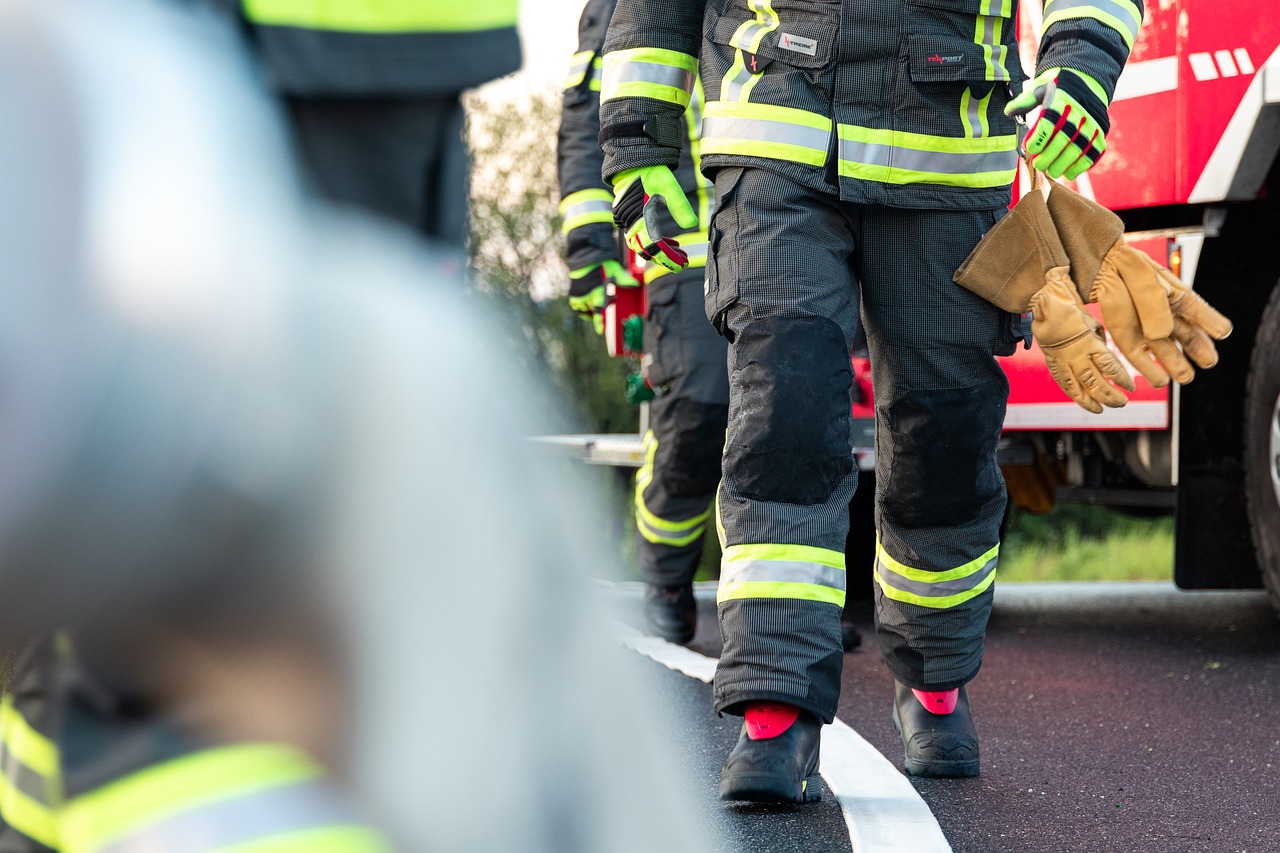
Understanding Nutritional Needs in Emergencies
When disaster strikes, whether it’s a natural calamity or a health crisis, our bodies go into survival mode. This means that the nutritional needs of individuals can change dramatically. During emergencies, stress levels rise, and so does the body’s demand for certain nutrients. Understanding these needs is crucial for maintaining health and supporting recovery.
First and foremost, it's important to recognize that caloric intake may need to be increased. In times of stress, your body burns more calories, so having a plan for high-energy foods is essential. Not only do you need enough calories, but also the right balance of macronutrients: carbohydrates, proteins, and fats.
Carbohydrates provide the quick energy needed to keep you moving, especially if you’re involved in physically demanding tasks such as evacuation or recovery efforts. Opt for complex carbohydrates like whole grains, which provide sustained energy. Meanwhile, proteins play a key role in recovery, helping to repair tissues and maintain muscle mass. Lastly, don’t forget about fats, which are essential for hormone production and overall health.
In addition to macronutrients, micronutrients—such as vitamins and minerals—become even more important during emergencies. Nutrients like vitamin C and zinc can bolster your immune system, which is particularly vulnerable during stressful times. Foods rich in these nutrients should be prioritized in any emergency food supply. It’s also wise to consider the following essential nutrients:
- Vitamin D: Supports bone health and immune function.
- Iron: Vital for oxygen transport in the blood, especially for those who are physically active.
- Magnesium: Helps with muscle function and energy production.
Hydration is another critical aspect of nutrition that often gets overlooked in emergencies. Water is essential for nearly every bodily function, and dehydration can lead to serious health issues. During a crisis, ensure that you have access to clean water and consider how much you’ll need based on your activities and the climate. Remember, your body can survive for days without food, but only a few days without water.
In summary, understanding nutritional needs in emergencies is about more than just having food on hand. It's about ensuring that the food you have meets the body’s heightened demands for energy, recovery, and overall health. By planning ahead and including a variety of nutrient-dense foods, you can significantly improve your chances of staying healthy during challenging times.
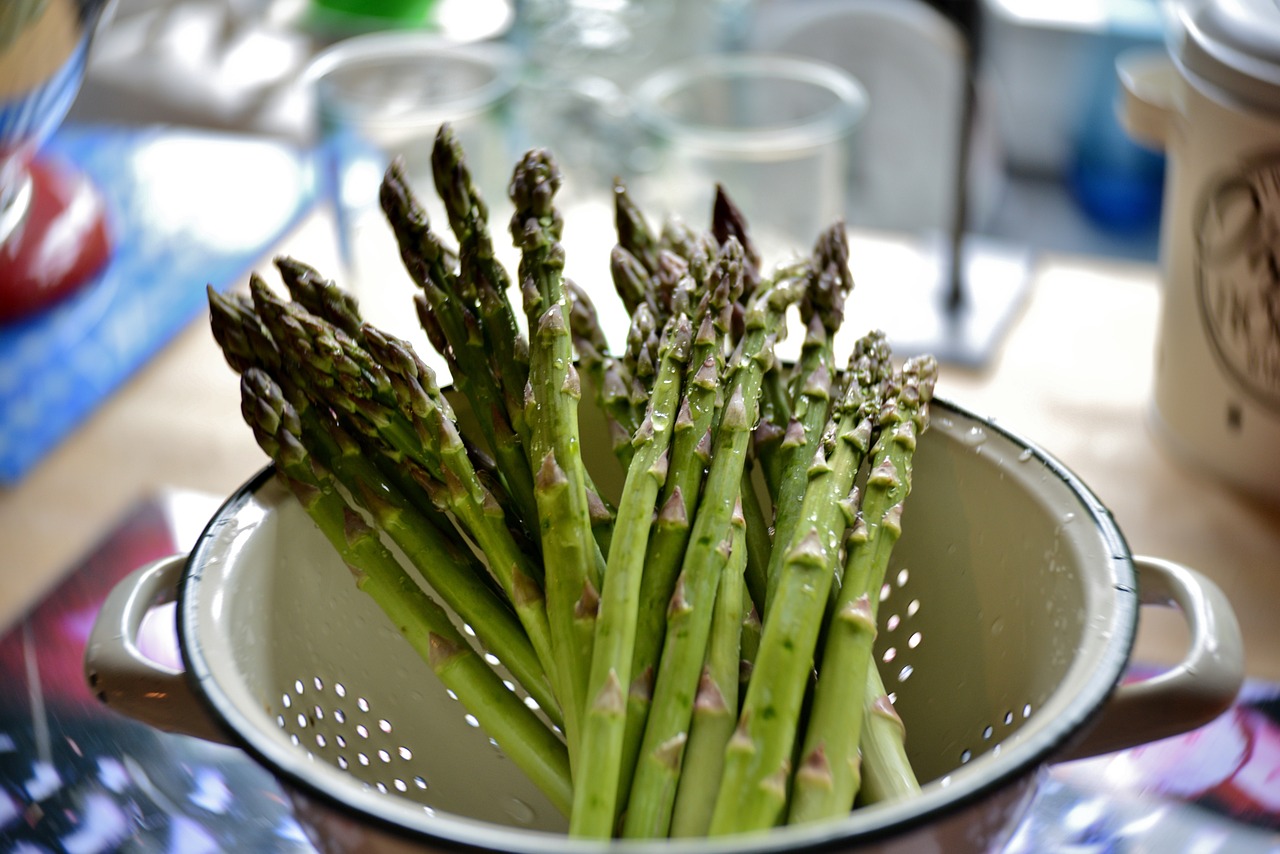
Planning Emergency Food Supplies
When it comes to emergencies, whether natural disasters or unexpected crises, having a solid plan for food supplies can be the difference between chaos and calm. Imagine being caught in a storm, with no power and limited access to food. It’s not just about surviving; it’s about thriving during tough times. Proper planning ensures that you have the right nutrients to keep your energy levels up and your spirits high. So, how do you go about this? Let's dive into some strategies that will help you prepare effectively.
First and foremost, it’s essential to consider the types of foods you will need. The goal is to create a balanced supply that includes a variety of food groups. Think of it like packing for a long trip; you wouldn’t just throw in a few snacks and hope for the best! You need a mix of carbohydrates, proteins, fats, vitamins, and minerals. This means selecting foods that are not only non-perishable but also nutrient-dense. Foods rich in vitamins and minerals can help your body function optimally, even under stress.
Next, let’s talk about storage. Having a well-organized pantry can save you time and stress when an emergency strikes. Store your supplies in a cool, dry place, and make sure to rotate them regularly. This means using older items first and replacing them with fresh ones. You can create a simple inventory list to keep track of what you have and when it expires. This is similar to maintaining a garden; if you don’t tend to it regularly, it can quickly become overgrown and unmanageable.
Another crucial aspect is to think about portion sizes and meal planning. It’s not just about having food on hand; it’s about having enough to sustain you and your family. Consider how many people you are feeding and for how long. A good rule of thumb is to have at least a three-day supply of food per person. This could include:
- Canned vegetables and fruits
- Whole grain pasta and rice
- Nut butters and jams
- Dehydrated meals
Moreover, it’s wise to have a few high-calorie options on hand. These can be lifesavers when you need a quick energy boost. Think about items like trail mix, granola bars, or even energy gels. They are compact, easy to store, and provide a quick source of energy when you need it the most.
Lastly, don’t forget about your cooking equipment! In an emergency, you might not have access to a full kitchen. Having a portable stove or even a campfire setup can be invaluable. Ensure you have utensils, can openers, and a way to purify water, as hydration is just as critical as food. Remember, in a crisis, every little bit helps!

Choosing Non-Perishable Foods
When it comes to preparing for emergencies, one of the most crucial aspects is selecting non-perishable foods. These foods can last for extended periods without refrigeration, making them ideal for situations where access to fresh produce may be limited. But how do you choose the right options? It’s essential to focus on foods that are not only shelf-stable but also packed with the nutrients your body needs to thrive during a crisis.
First and foremost, consider the nutritional value of the non-perishable foods you choose. Look for items that provide a balance of carbohydrates, proteins, and fats. Foods rich in vitamins and minerals are also vital. For example, canned vegetables and fruits can offer essential nutrients, while whole grains and legumes provide fiber and energy. Additionally, don't overlook the importance of taste; you’ll want to ensure that the food you store is something you and your family will actually want to eat, even in stressful situations.
Another important factor to keep in mind is the packaging. Non-perishable foods should come in sturdy, sealed containers that protect them from moisture and pests. Canned goods are an excellent choice, as they typically have a long shelf life and are easy to open. However, remember to check the expiration dates regularly and rotate your supplies. This practice, known as FIFO (First In, First Out), ensures that older items are used before they expire, keeping your emergency stock fresh and safe.
To make the selection process easier, here are some categories of non-perishable foods to consider:
- Canned Goods: Vegetables, fruits, soups, and meats.
- Grains: Rice, pasta, quinoa, and oats.
- Legumes: Canned or dried beans, lentils, and peas.
- Snacks: Nuts, seeds, and granola bars.
- Dehydrated Foods: Freeze-dried fruits and meals.
By diversifying your non-perishable food choices, you can create a well-rounded emergency food supply that meets your family’s needs. It's also a good idea to think about any special dietary requirements or preferences. If someone in your household is vegetarian, vegan, or has specific allergies, ensure that your emergency stock reflects these needs. This attention to detail will not only keep everyone nourished but also help maintain morale during challenging times.
In summary, choosing non-perishable foods for emergencies is not just about filling your pantry with any items that won’t spoil. It’s about making informed decisions that prioritize nutrition, taste, and dietary needs. With a little planning and consideration, you can ensure that your family stays healthy and satisfied, no matter the circumstances.

High-Calorie Options
In emergency situations, the importance of maintaining energy levels cannot be overstated. When the unexpected strikes, whether it’s a natural disaster or a sudden health crisis, having access to high-calorie foods becomes essential. These foods not only provide the necessary energy to keep you going but also play a crucial role in recovery and overall well-being. So, what are the best high-calorie options you can include in your emergency food supplies?
First and foremost, consider foods that are calorie-dense and require minimal preparation. Think of items like nut butters, which are packed with healthy fats and protein. A single tablespoon of peanut butter can contain around 100 calories, making it an excellent choice for quick energy. Additionally, nut butters can be paired with whole-grain crackers or fruit for a more balanced snack. Speaking of fruits, dried fruits such as raisins or dates are also fantastic high-calorie options. They are lightweight, non-perishable, and can provide a quick source of energy when you need it most.
Another great category to explore is canned foods. Canned beans, for example, are not only high in calories but also rich in protein and fiber. A single serving can provide around 200 calories, making them a filling option. When selecting canned foods, look for those that are low in sodium and sugar to ensure you’re making healthier choices. Canned fish, such as tuna or salmon, is another protein-packed option that can be stored for long periods and offers a high-calorie count as well.
For those who enjoy cooking, consider adding instant oatmeal to your emergency food stash. It’s not only easy to prepare but can also be enhanced with various toppings like honey, nuts, or dried fruits to boost its caloric content. Just one packet can provide around 150 calories, and when you add your favorite toppings, the energy value increases significantly.
Lastly, don't overlook the power of energy bars. These compact treats are designed specifically for high energy and convenience. Many brands offer bars that contain upwards of 200-300 calories per serving, making them perfect for emergencies. Just be sure to check the labels for added sugars and choose bars that have a good balance of protein, fats, and carbohydrates.
In summary, when planning your emergency food supplies, focus on high-calorie options that are easy to store and prepare. Foods like nut butters, dried fruits, canned beans, and energy bars not only provide the necessary calories but also help maintain your strength and health during challenging times. Remember, having the right foods on hand can make all the difference in your ability to cope with emergencies.
- What are the best high-calorie foods for emergencies? High-calorie foods include nut butters, dried fruits, canned beans, canned fish, instant oatmeal, and energy bars.
- How can I ensure my emergency food supplies are nutritious? Choose a variety of foods that include proteins, healthy fats, and carbohydrates to maintain a balanced diet.
- How long can I store high-calorie foods? Most non-perishable high-calorie foods can last for several months to years if stored properly in a cool, dry place.

Protein Sources
When it comes to emergency situations, protein is a vital nutrient that plays an essential role in maintaining the body's health and supporting recovery. Whether you're facing a natural disaster, a pandemic, or any other urgent scenario, having adequate protein sources in your emergency food supplies can make all the difference. Protein is critical for repairing tissues, building muscles, and producing enzymes and hormones. It also helps in keeping your immune system strong, which is crucial during times of crisis.
In emergencies, you may not have access to fresh foods, making it important to choose non-perishable protein sources that can withstand time without refrigeration. Here are some excellent options to consider:
- Canned Beans: These are not only rich in protein but also provide fiber, making them a great choice for your emergency kit.
- Peanut Butter: Packed with protein and healthy fats, peanut butter is a delicious and versatile option that can be eaten straight from the jar or spread on crackers.
- Jerky: Beef, turkey, or even plant-based jerky can be a great source of protein that requires no cooking.
- Protein Bars: These are convenient and often fortified with vitamins and minerals, making them a great snack during emergencies.
Additionally, consider incorporating powdered protein supplements into your food supplies. These can easily be mixed with water or added to other foods to boost protein intake without taking up much space. When choosing protein sources, aim for a variety that includes both animal-based and plant-based options to ensure a well-rounded intake.
It's also important to think about the packaging of these protein sources. Look for products that have a long shelf life and are easy to store. Canned goods, vacuum-sealed packages, and pouches are excellent choices. Be sure to check expiration dates regularly and rotate your supplies to keep them fresh. In the end, having a good mix of protein options in your emergency food kit can not only help sustain energy levels but also support overall health during challenging times.
1. Why is protein important during emergencies?
Protein is crucial for repairing tissues, building muscles, and keeping the immune system strong, especially when the body is under stress during emergencies.
2. What are some good non-perishable protein sources?
Canned beans, peanut butter, jerky, and protein bars are excellent non-perishable protein sources that can be included in emergency food supplies.
3. How can I ensure my protein sources stay fresh?
Choose products with long shelf lives, check expiration dates regularly, and rotate your supplies to keep them fresh and ready for use.

Hydration and Nutrition
When we think about nutrition in emergencies, it's easy to focus solely on food. However, hydration is just as critical, if not more so. Imagine your body as a well-tuned machine; without water, it can quickly become rusty and inefficient. During emergencies, stress levels can skyrocket, leading to increased fluid loss through sweat and respiration. Therefore, understanding the relationship between hydration and nutrition is vital.
Water is essential for numerous bodily functions, including digestion, absorption of nutrients, and the regulation of body temperature. In high-stress situations, dehydration can lead to fatigue, confusion, and even serious health complications. In fact, studies show that even mild dehydration can impair cognitive function and physical performance. So, how do we ensure we're adequately hydrated during a crisis?
First, it’s important to have a clear plan for water supply. In emergency situations, access to clean drinking water may be compromised. Therefore, storing an adequate amount of water is crucial. The general recommendation is to have at least one gallon of water per person per day for at least three days. This amount should not only cover drinking but also cooking and sanitation needs. To make the most of your water supply, consider the following:
- Store water in clean, food-grade containers to avoid contamination.
- Rotate your water supply every six months to keep it fresh.
- Consider water purification methods such as filters or chemical tablets in case of contamination.
Now, while water is essential, it’s also important to remember that certain foods contribute to hydration. Fruits and vegetables with high water content, such as cucumbers, oranges, and watermelon, can help maintain hydration levels. Including these in your emergency food supply can be a game changer. Not only do they provide essential vitamins and minerals, but they also help keep you hydrated. Here’s a quick look at some hydrating foods:
| Food | Water Content (%) |
|---|---|
| Cucumber | 95% |
| Tomato | 94% |
| Watermelon | 92% |
| Strawberries | 91% |
In summary, maintaining proper hydration is crucial during emergencies. Not only does it support overall health, but it also enhances the effectiveness of the nutrients consumed. Remember, a well-hydrated body is better equipped to handle stress and recover more quickly. So, as you prepare for any potential emergencies, don't forget to prioritize both hydration and nutrition. They go hand in hand, like peanut butter and jelly, and together they can make all the difference in your health and well-being.
Q: How much water should I store for emergencies?
A: It's recommended to store at least one gallon of water per person per day for at least three days.
Q: What are some good non-perishable food options for hydration?
A: Foods like cucumbers, tomatoes, and watermelon, while not typically non-perishable, can be included in your emergency supplies if you have a way to keep them fresh. You can also consider dehydrated fruits, which can help with hydration when reconstituted with water.
Q: How can I purify water if it's contaminated?
A: You can purify water using filters, boiling, or chemical tablets. Always ensure to follow the instructions for the method you choose.
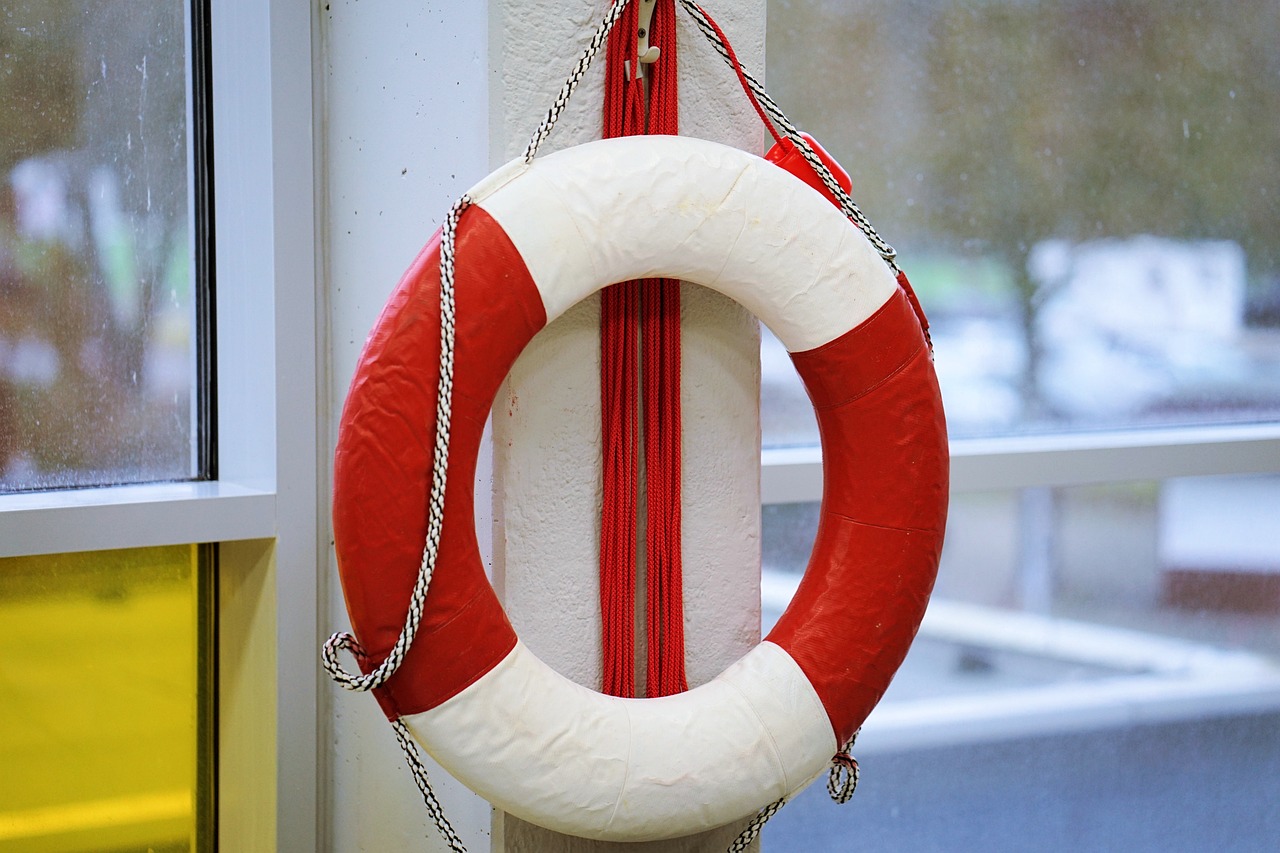
Special Dietary Considerations
When emergencies strike, it's not just about having enough food; it's also about ensuring that the food available meets the unique dietary needs of different individuals. In stressful situations, dietary restrictions can become a significant concern. For instance, people with food allergies or intolerances may face serious health risks if they consume products that contain allergens. Therefore, it's vital to have a comprehensive understanding of these special dietary considerations to cater to everyone affected by the crisis.
Moreover, certain populations, such as children, the elderly, and those with chronic illnesses, have specific nutritional requirements that must be addressed. Children need a balanced intake of vitamins and minerals to support their growth and development, while the elderly may require more protein and fiber to maintain muscle mass and digestive health. These groups can be particularly vulnerable during emergencies, so planning for their dietary needs is essential.
To effectively accommodate these varying dietary needs, consider the following strategies:
- Educate Yourself: Familiarize yourself with common allergens and dietary restrictions, such as gluten intolerance or lactose sensitivity.
- Stock Alternative Options: Always include a variety of foods that cater to different dietary needs. For example, gluten-free grains, dairy alternatives, and low-sodium options can be beneficial.
- Communicate: If you're part of a community or family group, make sure to discuss everyone's dietary needs ahead of time. This collaboration can lead to better planning and resource allocation.
Additionally, keep in mind that in a crisis, stress levels can be high, and individuals may not be able to communicate their needs effectively. Therefore, having a well-thought-out emergency food plan that includes options for people with special dietary needs can prevent unnecessary health complications and ensure that everyone has access to safe and nourishing food.
In summary, being prepared for special dietary considerations during emergencies is not just a logistical challenge; it’s a matter of health and safety. By anticipating the needs of vulnerable populations and accommodating various dietary restrictions, we can create a more inclusive and effective emergency response. Remember, the goal is to ensure that everyone has access to nutritional support during times of crisis, enabling them to recover and thrive despite the circumstances.
Q1: What should I include in an emergency food supply for someone with allergies?
A1: It's essential to include non-perishable foods that are labeled allergen-free. Consider items like canned fruits, vegetables, and gluten-free grains. Always check labels to ensure they meet dietary restrictions.
Q2: How can I ensure children have enough nutrition during an emergency?
A2: Include a variety of foods that are rich in vitamins and minerals, such as canned vegetables, fruits, and whole grains. Additionally, consider adding fortified cereals and snacks to their supply.
Q3: What are some high-protein non-perishable foods suitable for emergencies?
A3: Good options include canned beans, lentils, peanut butter, and canned tuna or chicken. These foods provide essential protein and can help maintain energy levels during stressful times.
Q4: How can I cater to the elderly's dietary needs during an emergency?
A4: Focus on easy-to-chew, nutrient-dense foods. Include items like oatmeal, soft fruits, and canned soups. Also, ensure they have access to sufficient hydration, as older adults may be more prone to dehydration.
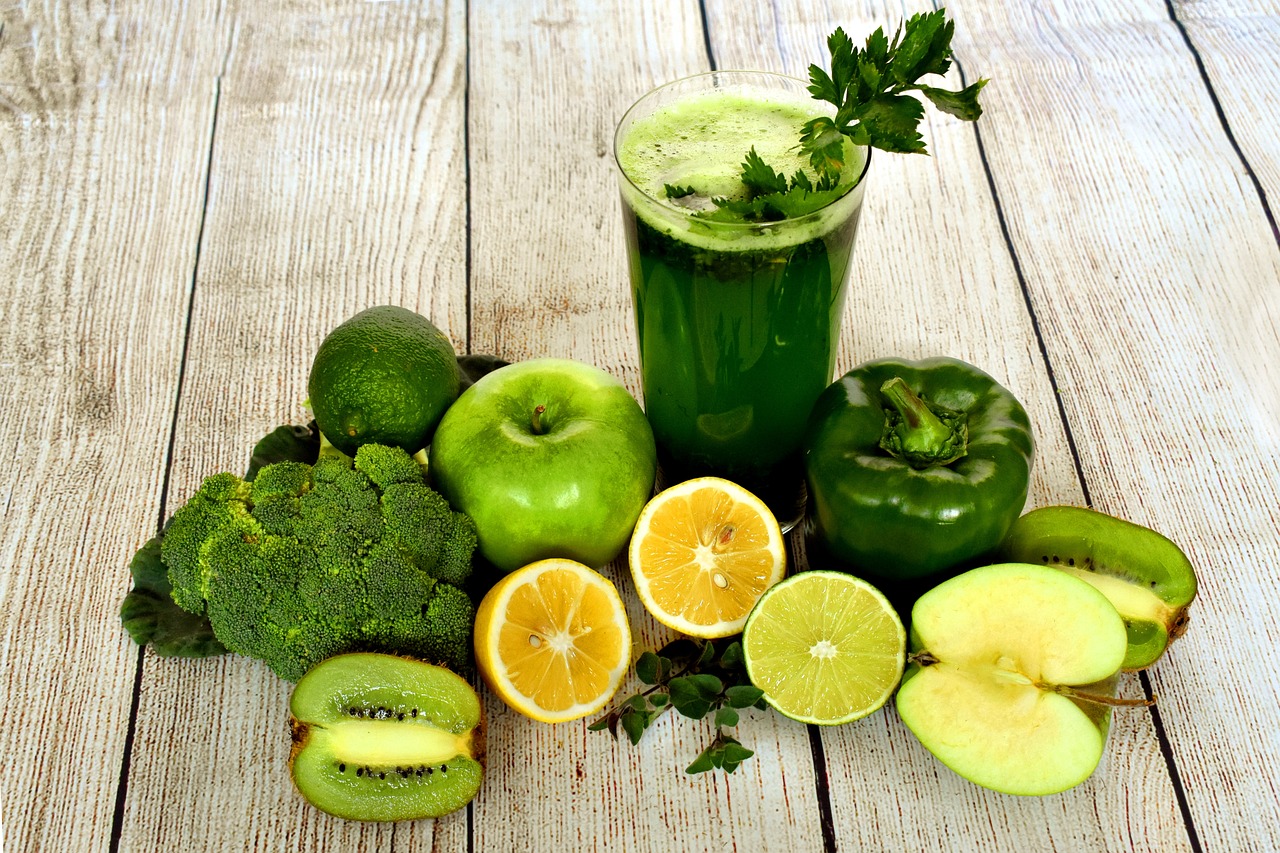
Allergies and Intolerances
In the chaos of an emergency, the last thing anyone wants to deal with is a food allergy or intolerance. Imagine being in a crisis situation, perhaps after a natural disaster, and you suddenly find yourself facing a severe allergic reaction because of a snack you thought was safe. It's crucial to recognize that managing food allergies effectively is not just important; it can be a matter of life and death. During emergencies, the availability of food can be unpredictable, and pre-packaged meals may not always cater to specific dietary restrictions. Therefore, being proactive is essential.
First and foremost, it's vital to have a well-thought-out plan in place. This means knowing the common allergens that may be present in emergency food supplies. The most prevalent allergens include:
- Peanuts
- Tree nuts
- Dairy
- Eggs
- Wheat
- Soy
- Fish
- Shellfish
When stocking up on emergency food, always read labels carefully. Many packaged foods may contain hidden allergens or be processed in facilities that handle allergens, increasing the risk of cross-contamination. It’s wise to opt for foods that are labeled as allergen-free or specifically made for those with dietary restrictions.
Additionally, consider creating an emergency food kit that caters to specific allergies. This kit should include safe snacks and meals that your family members can consume without risk. For instance, if someone in your household is gluten intolerant, ensure you have gluten-free options readily available. Not only does this help in avoiding allergic reactions, but it also provides peace of mind during stressful times.
In emergencies, communication is key. Make sure that everyone in your household understands the food allergies present and the importance of avoiding certain foods. If you're in a communal shelter or with a group, don't hesitate to inform others about your dietary needs. This way, everyone can work together to ensure that no one accidentally serves food that could trigger an allergic reaction.
Finally, always have necessary medications on hand, such as antihistamines or an EpiPen, if someone in your household has severe allergies. These can be lifesavers in critical moments. Remember, being prepared is not just about having food; it’s about ensuring that the food is safe for everyone involved.
Q: What should I include in an emergency food kit for someone with allergies?
A: Include allergen-free snacks, gluten-free options, and meals specifically designed for dietary restrictions. Always check labels for hidden allergens.
Q: How can I ensure that my food is safe in a communal shelter?
A: Communicate your dietary needs clearly to others, and be proactive in checking food labels to avoid cross-contamination.
Q: What medications should I have on hand for allergies during emergencies?
A: Always have antihistamines and an EpiPen if prescribed, as these can help manage allergic reactions effectively.
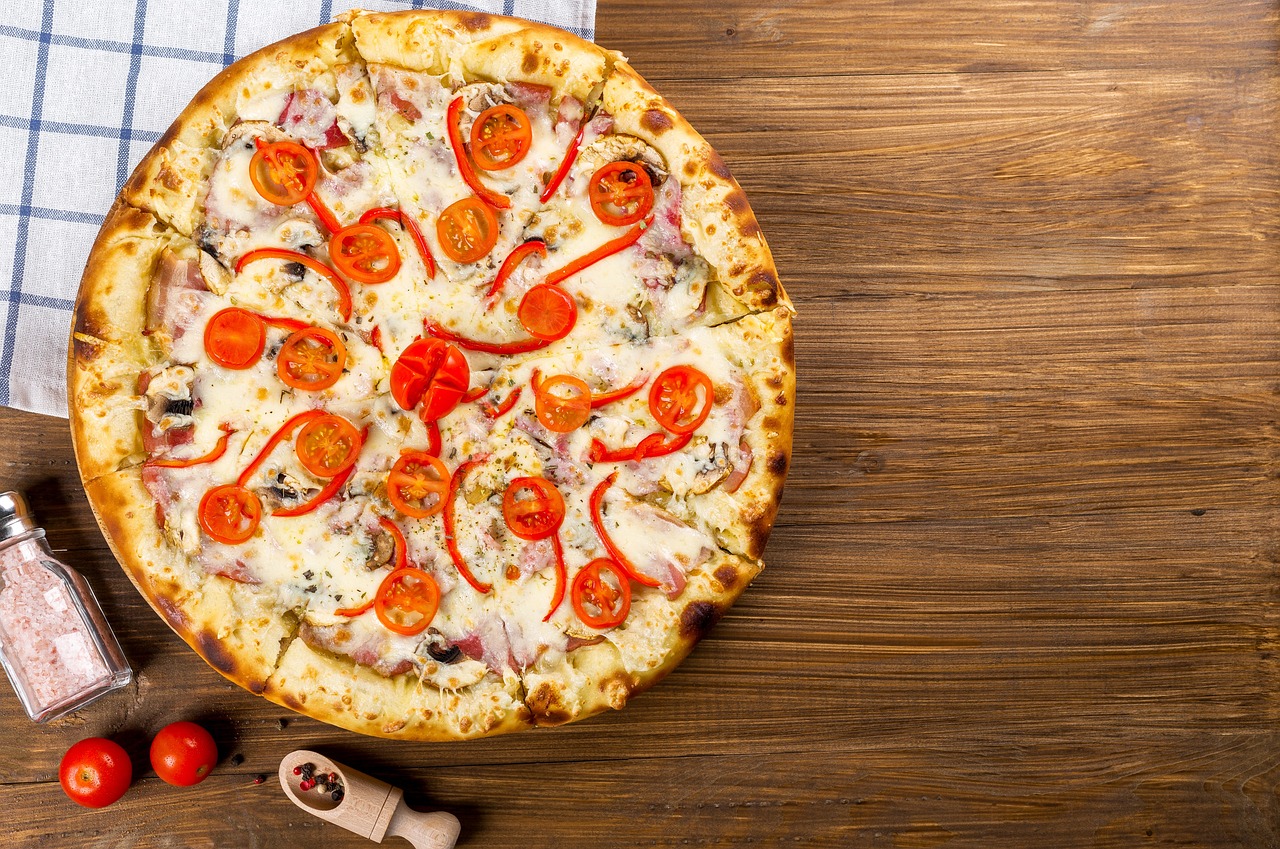
Dietary Needs for Vulnerable Populations
In any emergency situation, understanding the dietary needs of vulnerable populations is crucial. These groups, which include children, the elderly, pregnant women, and individuals with chronic health conditions, often have unique nutritional requirements that must be met to ensure their health and recovery. For instance, children require adequate calories and nutrients for their growth and development, while the elderly may need softer foods that are easier to chew and digest. Additionally, pregnant women need increased levels of certain vitamins and minerals to support both their health and the developing fetus.
One of the most significant challenges during emergencies is ensuring that these vulnerable groups have access to the right foods. It’s not just about having enough food; it’s about having the right kind of food. For children, this means providing a variety of foods that are rich in essential nutrients such as calcium, iron, and vitamins. For the elderly, foods high in fiber and low in sodium can help manage health conditions like hypertension and diabetes.
To better illustrate the dietary needs of these populations, consider the following table:
| Population | Nutritional Needs | Recommended Foods |
|---|---|---|
| Children | High in calories, protein, vitamins, and minerals | Whole grains, fruits, vegetables, dairy products, lean meats |
| Elderly | High in fiber, low in sodium, easy to chew | Oatmeal, soft fruits, cooked vegetables, fish |
| Pregnant Women | Increased iron, calcium, folic acid | Leafy greens, beans, nuts, fortified cereals |
| Individuals with Chronic Conditions | Tailored to specific health needs (e.g., low sugar for diabetics) | Whole foods, low-sodium options, healthy fats |
In addition to meeting these dietary needs, it’s vital to consider food allergies and intolerances that may affect these vulnerable groups. For instance, children with allergies to nuts or gluten require alternatives that still provide essential nutrients. Similarly, elderly individuals may have lactose intolerance, necessitating dairy substitutes that are equally nutritious.
Finally, the emotional aspect of food cannot be overlooked. Comfort foods can play a significant role in mental well-being, especially during crises. Therefore, having a mix of nutritious and familiar foods can help provide a sense of normalcy and comfort during challenging times. This balance of nutrition and emotional support is essential for the health and recovery of vulnerable populations in emergencies.
- What are the most important nutrients for children during emergencies?
Children need a balanced intake of calories, protein, vitamins, and minerals to support their growth and energy levels. - How can I ensure elderly individuals receive adequate nutrition?
Focus on providing soft, easy-to-chew foods that are high in fiber and low in sodium to support their health. - What should I consider for pregnant women in emergencies?
Ensure access to foods rich in iron, calcium, and folic acid to support both the mother and developing fetus. - How can I accommodate food allergies in emergency planning?
Always have alternatives available and be aware of the specific allergies within your group to prevent any allergic reactions.
Frequently Asked Questions
- Why is good nutrition crucial during emergencies?
Good nutrition is essential during emergencies because it helps maintain energy levels, supports immune function, and aids in recovery. In stressful situations, the body requires certain nutrients to cope with physical and mental demands. Without proper nutrition, recovery can be prolonged, and health outcomes may worsen.
- What are the essential nutrients needed in emergency situations?
During emergencies, the body needs a balanced intake of carbohydrates, proteins, fats, vitamins, and minerals. Carbohydrates provide energy, proteins are essential for tissue repair, and fats are crucial for long-term energy storage. Additionally, vitamins and minerals support various bodily functions, including immune response and recovery.
- How should I plan my emergency food supplies?
Planning your emergency food supplies involves selecting non-perishable foods, storing them properly, and rotating them regularly. Aim for a variety of items that include high-calorie options, protein sources, and hydration supplies. Make sure to account for personal dietary needs and preferences when creating your emergency food kit.
- What are some good non-perishable food options?
Great non-perishable food options include canned goods, dried fruits, nuts, whole grain cereals, and freeze-dried meals. These foods are nutrient-dense and can be stored for long periods without refrigeration, making them ideal for emergencies.
- How can I ensure I have enough protein in my emergency supplies?
To ensure adequate protein in your emergency supplies, consider including items like canned beans, lentils, nut butters, canned fish, and protein bars. These options are not only non-perishable but also provide essential amino acids that support recovery and overall health.
- Why is hydration just as important as nutrition in emergencies?
Hydration is critical because water is essential for nearly every bodily function, including digestion, circulation, and temperature regulation. In emergencies, stress and physical exertion can increase fluid needs, making it vital to have an adequate supply of clean drinking water available.
- How can I accommodate dietary restrictions in my emergency plan?
To accommodate dietary restrictions, first, identify the specific needs of all individuals in your household. Stock non-perishable foods that meet these requirements, such as gluten-free grains or dairy alternatives. Always read labels carefully to avoid allergens and ensure that everyone has access to safe food options during emergencies.
- What should I consider for vulnerable populations like children and the elderly?
For vulnerable populations, consider their specific nutritional needs, such as higher calorie intake for children and softer foods for the elderly. Include age-appropriate snacks and easy-to-eat items in your emergency supplies. It's also important to ensure that any necessary medications or supplements are readily available.



















